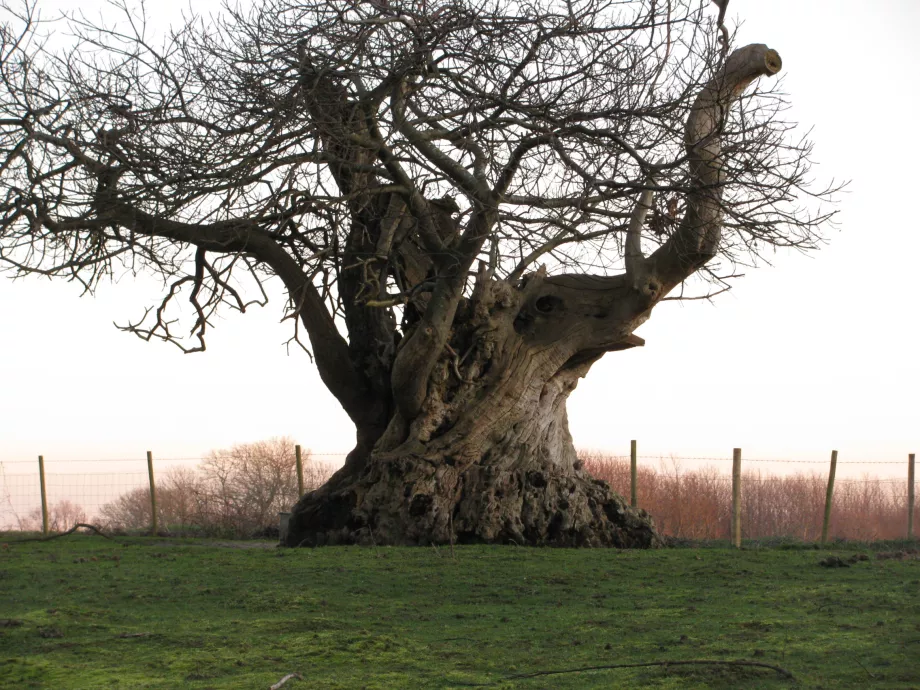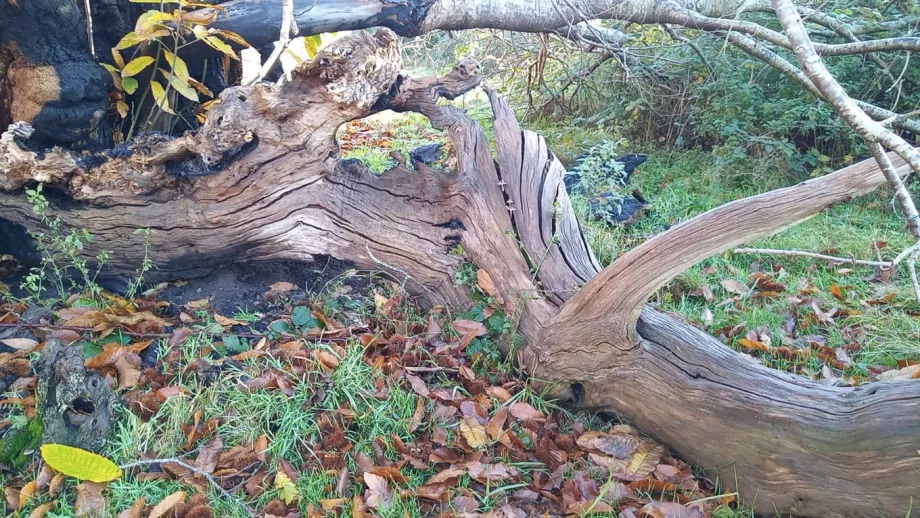
'Elephant tree', Hothfield Heathlands, Ashford
The post, which has already racked up 5,000 likes, shows the mighty ancient tree, thought to be a sweet chestnut, with a twisted trunk, resembling an elephant. Such was the popularity, Area Manager Ian Rickards was tasked with taking some additional images of the giant ancient specimen, however, on arrival at the location, he was met with a devastating sight. The tree, which is hundreds of years old, had been burnt to the ground, with the branch that once formed the elephant's trunk left in ashes on the ground.
Ian said: “I’m devastated by the destruction of this stunning tree; it had stood the test of time, though we can take comfort in the fact it was one of a line of four and the other ancient trees remain.
“It would have been planted as cover for livestock or to create an interesting landscape for the lord of the manor. It had grown out in the open, developing a huge trunk and sprawling thick limbs. Over time teeth marks from livestock cause the trunk to create epicormic growth - bark and buds overgrowing the areas where sheep and cattle have nibbled. This often causes the trunk to expand into all sorts of interesting shapes.

Ian added: “Species such as barn owls and tawny owls rely on big old trees to create the perfect nesting holes, but a lack of veteran trees has made these species more and more reliant on artificial nest boxes.
“These superb trees are often damaged through activities like soil compaction which can be a result of nearby road or house building or getting swamped by faster-growing tree species like sycamore and birch.”
Veteran trees are important for wildlife. The holes, cracks, and gaps contained in them create nesting opportunities for birds, mammals, and thousands of insects. The rotting wood allows fungi to develop, which in turn creates homes for burrowing beetles.

Save Oaken Wood
Kent Wildlife Trust is currently supporting a campaign to Save Oaken Wood, an ancient woodland in Aylesford which is under threat of a quarry expansion.

